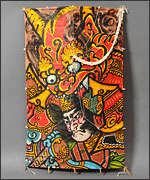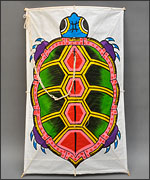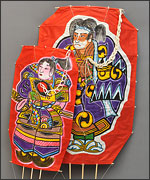Sakata-tako (Kite) (Sakata City)
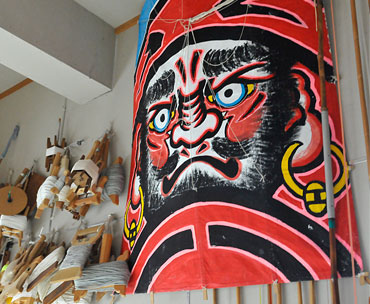
History/Outline
The Sakata Kite Preservation Association was started after a kite design sketch happened to be found.
Plasterers in Sakata first made kites as a handmade craft during the winter season. It is supposed that the original kite sketches were carried to Yamagata from Osaka, a region famous for business transactions, by way of ships
along the northern route.
Around 1975, kite design sketches described as having been made in 1863 were discovered in an old house in the city. Soon after, the Sakata Kite Preservation Association was organized. Now under the leadership of its 5th president, the association is trying to make as well as spread Sakata Kites.
Around 1975, kite design sketches described as having been made in 1863 were discovered in an old house in the city. Soon after, the Sakata Kite Preservation Association was organized. Now under the leadership of its 5th president, the association is trying to make as well as spread Sakata Kites.
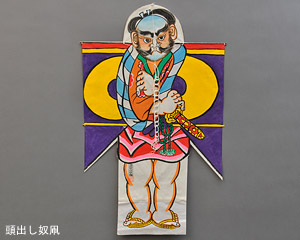
Techniques/Characteristics
Sakata kites feature bold patterns, colorful paintings and attractive full-size figures such as Kame (turtles) and Musha (samurai warriors).
As Sakata is windy the kites are made strong and designed to take flight even in gentle winds. They are made by constructing a frame using shaved bamboo sticks over which colored Japanese paper is spread.
There are more than 100 different design patterns, in which Kame-tako (turtle kite) is the most valuable design. This design is derived from the story that the castle in Sakata was called "Kame-gasaki-jo", meaning "The Castle of the Turtle". There are Hito-dako (human kites), Daruma-dako, and Kasube-tako, Hito-dako being unique in that a full-sized human being is painted.
There are more than 100 different design patterns, in which Kame-tako (turtle kite) is the most valuable design. This design is derived from the story that the castle in Sakata was called "Kame-gasaki-jo", meaning "The Castle of the Turtle". There are Hito-dako (human kites), Daruma-dako, and Kasube-tako, Hito-dako being unique in that a full-sized human being is painted.
Main Products
●Musha-tako Sasaki Takatsuna (Kite featuring a drawing of samurai warrior Sasaki Takatsuna) ●Kame-tako (Turtle-painted Kite) ●Hito-tako (Full-sized Human-painted Kites)
